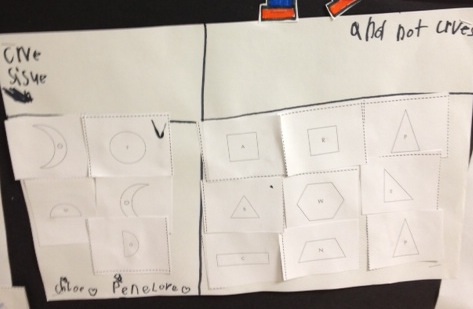
However, it was not a night off for the kiddos! When they arrived at our exhibit that evening, I handed them their official docent name tags, which read, "My name is ______, Ask me about ______." Under "Ask me about," I had filled in the names of the different locations that they had written about for our map project. (Mine said "Ask me about Nothing! haha)
The kiddos were extremely proud of their stickers. They stood near the exhibit and eagerly told their parents, siblings, and neighbors about the animals they had created, the labels they had written, and the learning webs they had drawn. As a class, we had prepared and practiced answers for common questions like, "What are the continents?", "What is an ocean?," and "How did you make your animals?" (I had also sent an email to parents encouraging them to ask these and other questions to get the kiddos talking).
 The families seemed very pleased with the learning and creative work our kiddos had done. A few parents even said they were learning new things! Almost no one who finished high school after before 2001 had heard of the Southern Ocean (which was first designated an ocean in the year 2000).
The families seemed very pleased with the learning and creative work our kiddos had done. A few parents even said they were learning new things! Almost no one who finished high school after before 2001 had heard of the Southern Ocean (which was first designated an ocean in the year 2000). Although many of the kiddos stayed in our end of the hallway for most of the evening, they also got to tour the school to see the exhibits in all the other classrooms. It was wonderful to have former students come up with their Docent name-tags and invite me to come see their imaginary class community or the cityscapes they had sculpted. I didn't make it to every classroom last night, but, fortunately, got to see most of the exhibits in the hallways when I got to school this morning.

We will probably keep our map up for another week before we take it down to make room for the next celebration of learning :)









































